Greetings my dears,
I hope you're all doing well.
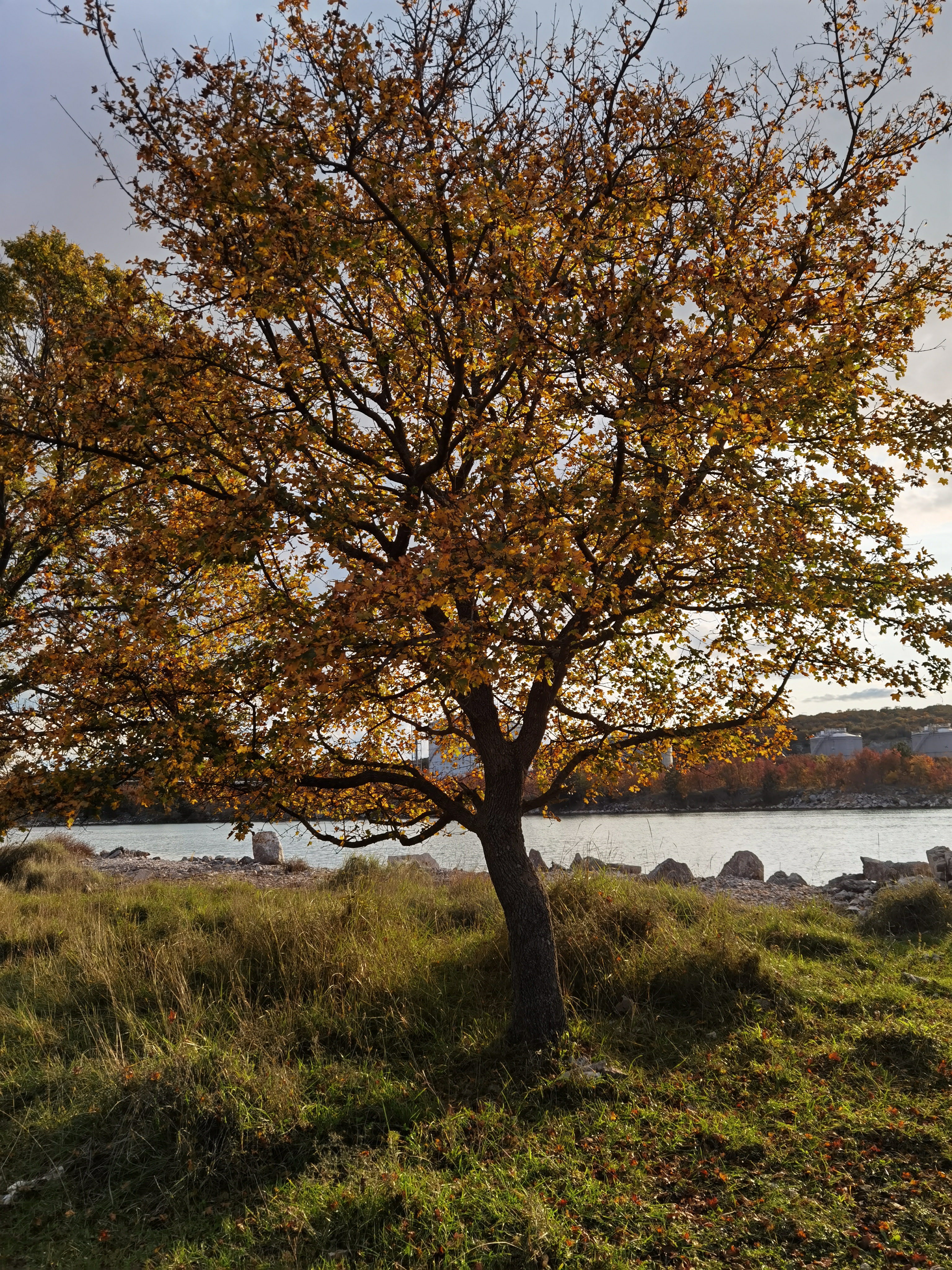
I chose to repeat my previous ritual of candles, music, quiet and relaxation, and writing today.
Christmas, the most delightful season of the year, has begun once more. I'm not sure if I agree or not, but I do like it. Every season, in my opinion, brings out the best in itself, so if you ask me, there is always something to look forward to. In the Summer, I look forward to the sun and the sea, and in the Winter, I look forward to Christmas and the rain (yeah, I am one of those people who adores rain), and others tell me I'm weird because of it, ah. Is it a bad thing to be weird? :)
In the fall, I enjoy the vibrant colors on the ground, and in the Spring, I enjoy the rebirth of nature, with birds chirping.
I've been a little more preoccupied lately with work and all sorts of day-to-day responsibilities in general. This involves traveling less and visiting new places.
I have to admit that I devote myself more to where I am, to enjoy the moment a little more than to think whether I took the perfect photo or not.
I've visited to the location where I'm taking you previously, and when I first got a camera, I had the notion of photographing all of the local castles. That's how I came across these ruins on the island of Krk; there were many more shots of the ruins themselves on the outer disk, which unfortunately broke down, but I think these photos will suffice to expose you to the site, its history, and to take you on a voyage away from your home.
Sometimes it is so difficult to express yourself in English since my mother tongue is Croatian.
In my head, everything somehow sounds different and more extensive, and English certainly finds a way to "shorten" my story a bit haha.
Can we venture on a new adventure? :)
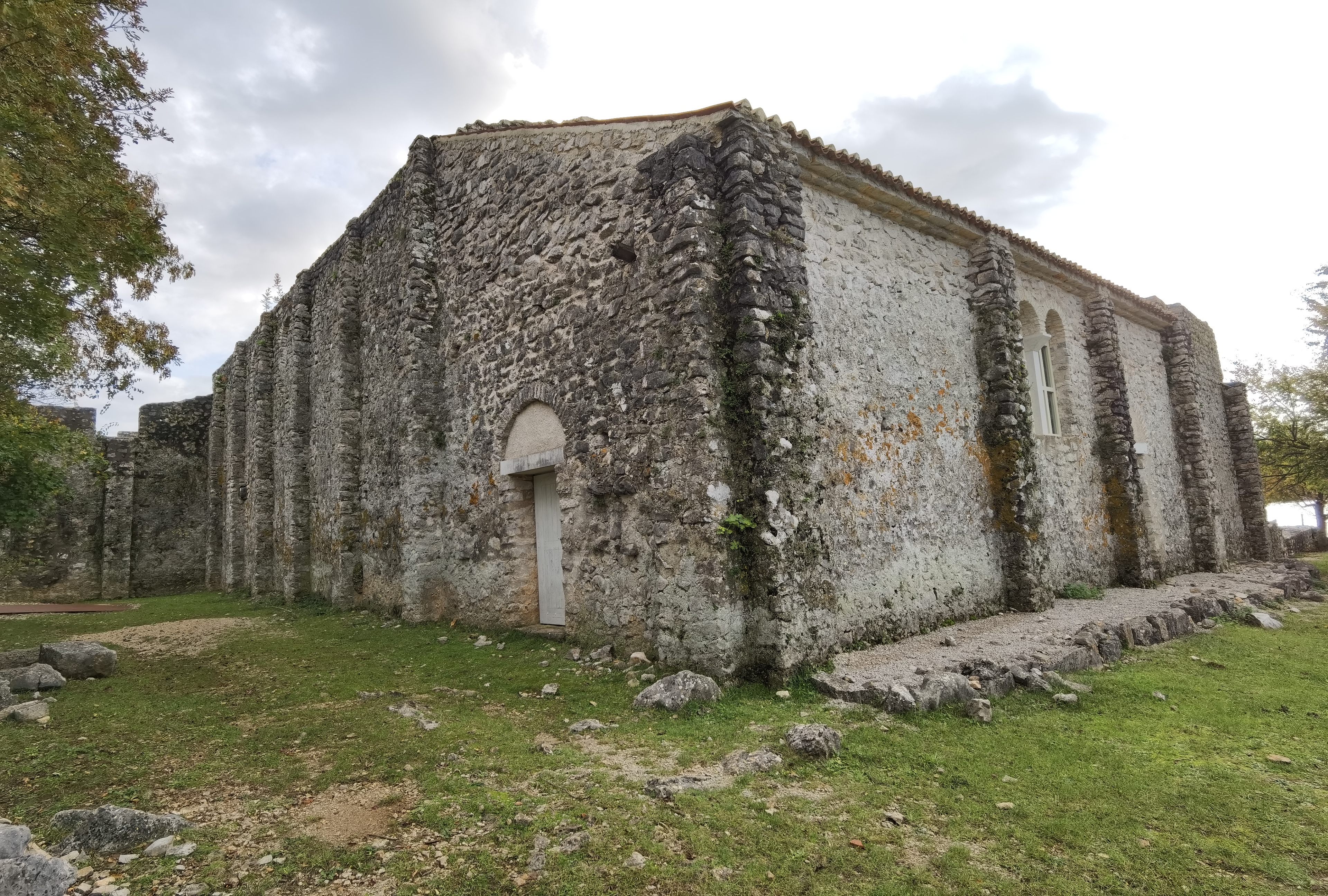
It is a Latin cross-shaped single-nave longitudinal basilica. It is the only preserved sacral building of this type on the island of Krk, as well as the entire Croatian coast, and, according to some sources, the largest in the Mediterranean.
The basilica could only have been an imperial or episcopal expenditure to demonstrate their dominance because it was such a difficult and expensive building. A new Christian city began to emerge on the ruins of the Roman city of Fulfinum with the construction of this church, but its secrets have yet to be discovered by specialists.
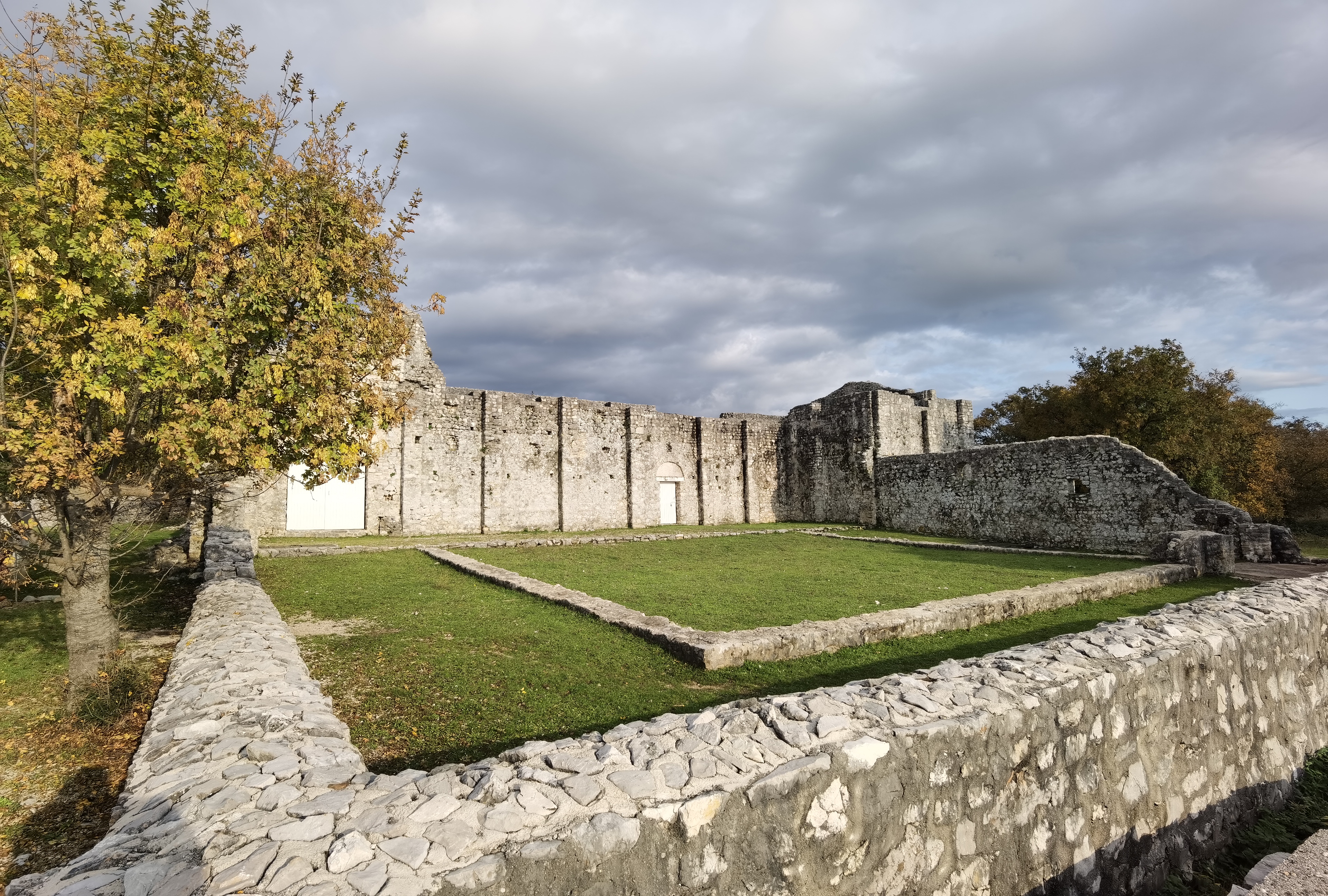
A late antique necropolis grew up around the church's extraordinarily well-preserved walls. Only a portion of these tombs-mausoleums has been examined. The toponym Mirine is now applied to this majestic early Christian structure, which is a dialectal name for ruins, Croatianized from Latin murus - wall, and so adds to the municipality of Omišalj's tourist offering.
Do you often wonder what happened in the past in the locations you visit, particularly when you visit a castle or another historical site? I'd like to be able to glimpse a vision of the past, to see what it was like back then, how people acted, what they did... I think about it so often, it would be fun to be able to do that.
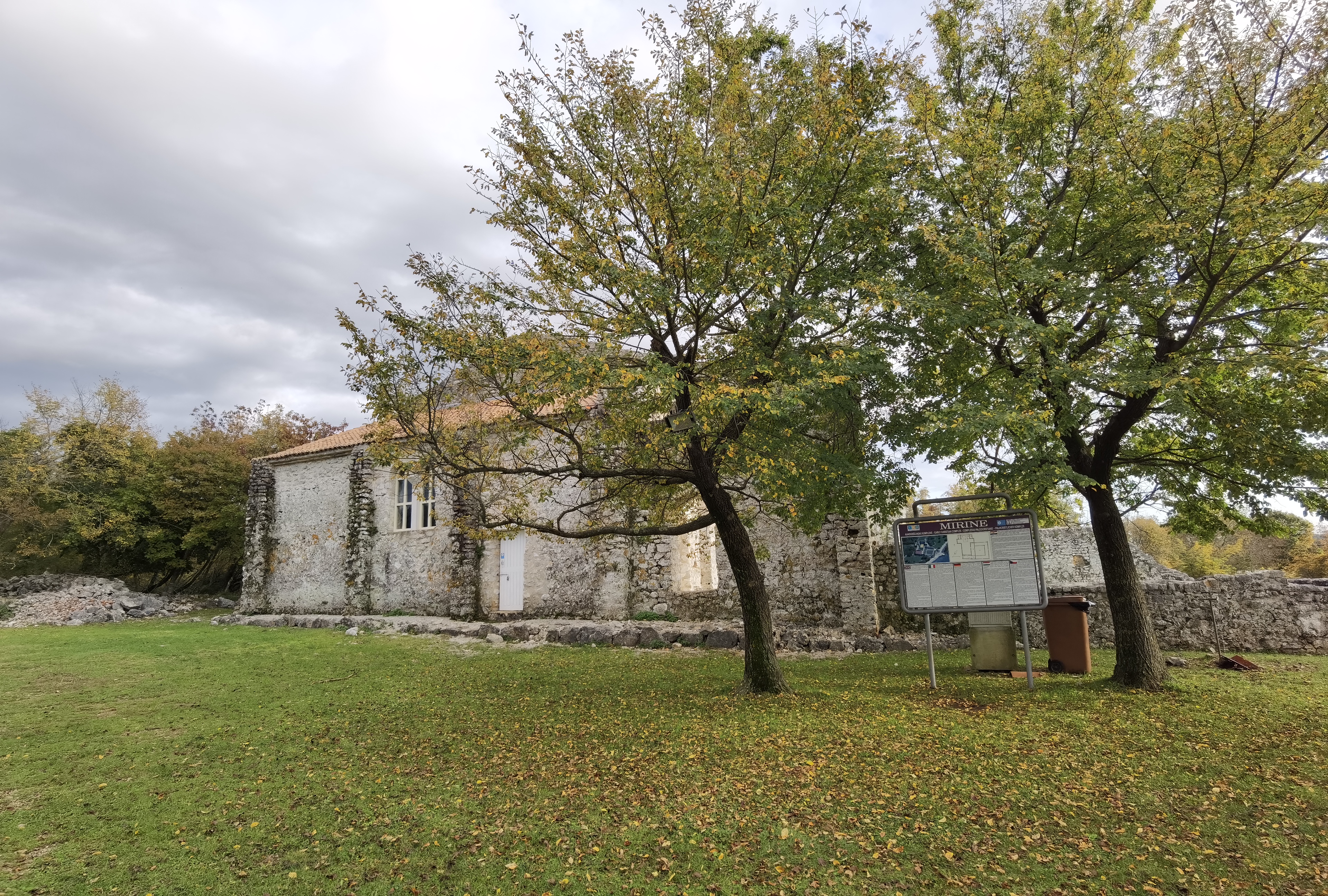
Another important architectural feature near Sepen Bay is the ruins of the ancient Roman city of Fulfinum, which may be found on the rich plains along the coast. The city was founded in the early 1st century, shortly after the Roman Empire fell apart. It's a military outpost that serves as a haven for exiled Roman battle veterans. Despite the fact that the city's exploration and excavation are far from complete, Fulfinum was intended as a city of the highest civilizational achievements. Fulfinum, like any other Roman city, is thought to have had a proper grid of streets, forums, waterworks, and all urban amenities, including temples, city villas, residential quarters, public buildings, spas, market, harbor, huge warehouses, and a necropolis.
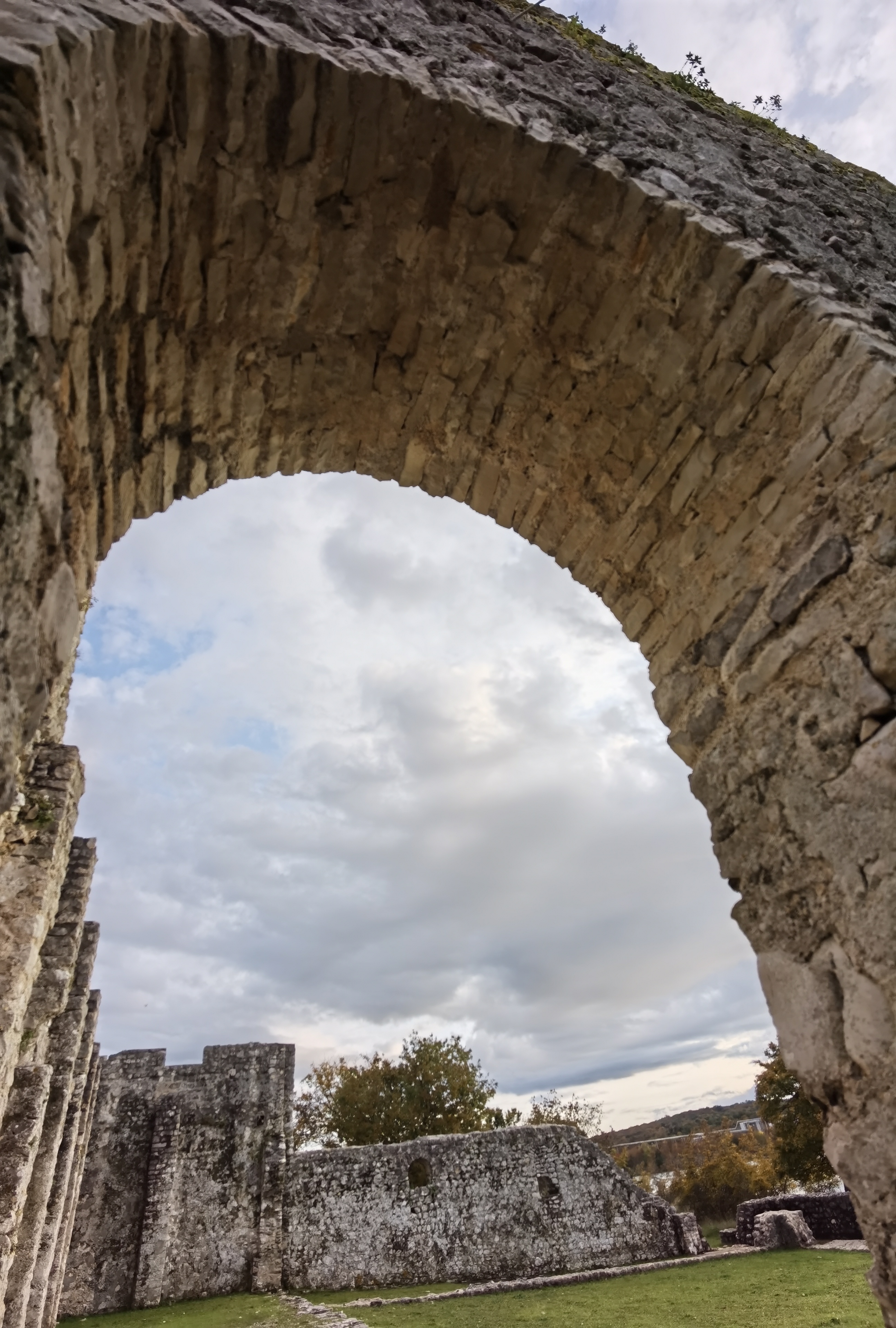
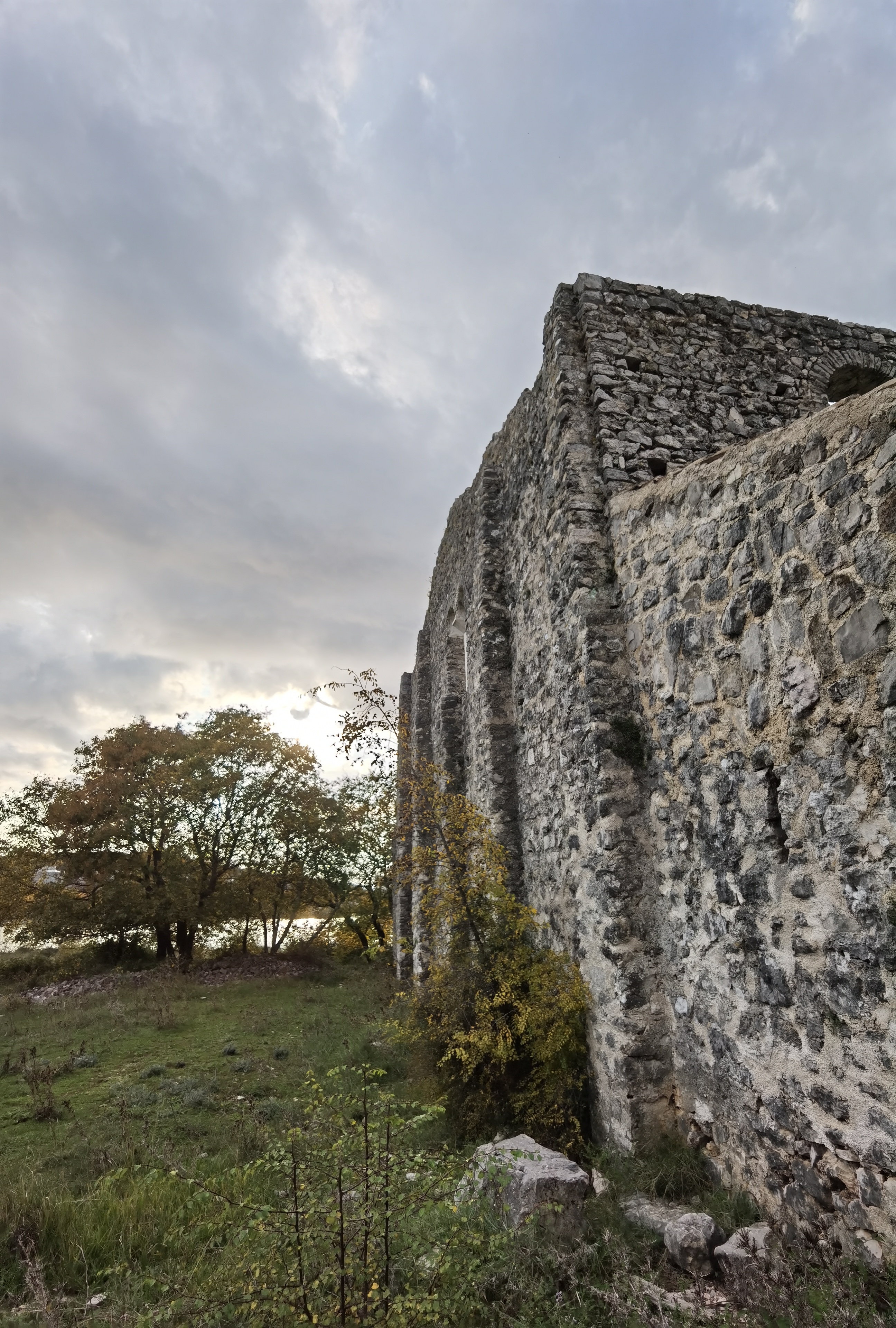
There is no precise date for the abandonment of Fulfinum. The city is thought to have "lasted" 300 to 500 years. Fulfinum was probably one of the first victims of ancient civilization's disintegration; conceived as a city of supreme civilizational achievements, open and gentle, sensitive to the slightest blows to the standard of urban life brought about by late antiquity's insecurities, it welcomed its demise alongside its civilizational creator. The city was destroyed (only the remnants of the walls are taller than one meter in some areas), civilisation was destroyed, and the population were relocated to Krk, a Romanized city. It was two feet below today's sea level when it was at its peak.


I don’t know about you, but I’m a huge nature lover. It really enjoys the beauty of nature to the maximum. I absorb everything from the look, the heat, the smell, all my senses work to the maximum.
Recently, the bitter winter has set in, making you want to hide beneath a blanket till the warm summer arrives and the days stretch out for hours.

In the midst of a late Autumn, it was one of those wonderful, warm days.
It would have been unfortunate if he hadn't gone outside and soaked in every last drop of the sun's warmth and beams.
Of course, the clouds had gathered in the meantime, but it was still pleasant and warm, and only when the darkness began to fall did it start to get much colder.



You can tell I like trees based on the photographs I'm showing you right now. I truly do, because the trees are so lovely. After appreciating the ruin and learning about its history, it was time to explore the surroundings. Beautiful nature and greenery, with a view of the Adriatic Sea and the sun's golden beams. I can sometimes just sit in silence and study the natural world around me; you should try it if you haven't already; it's quite pleasant.
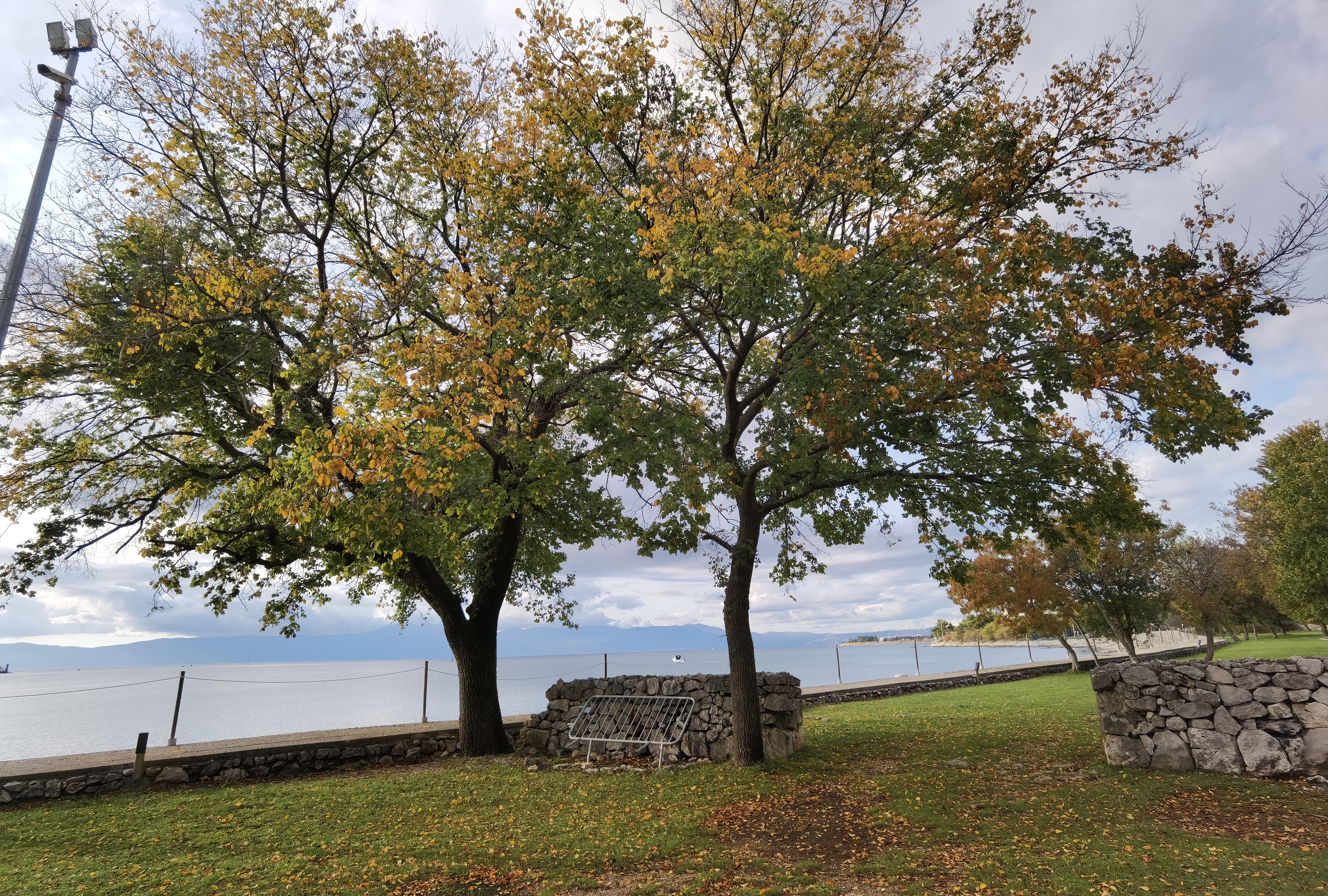
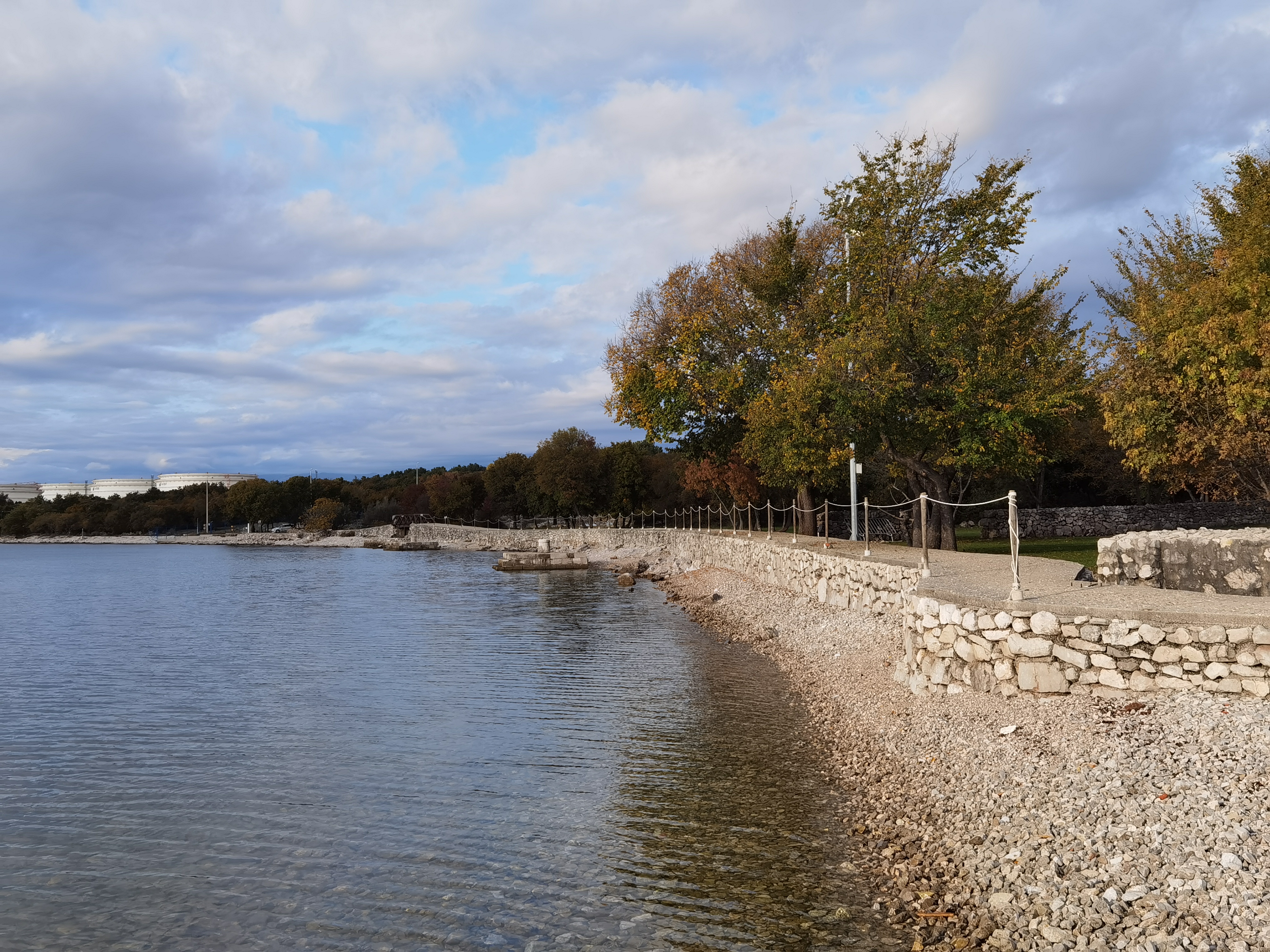
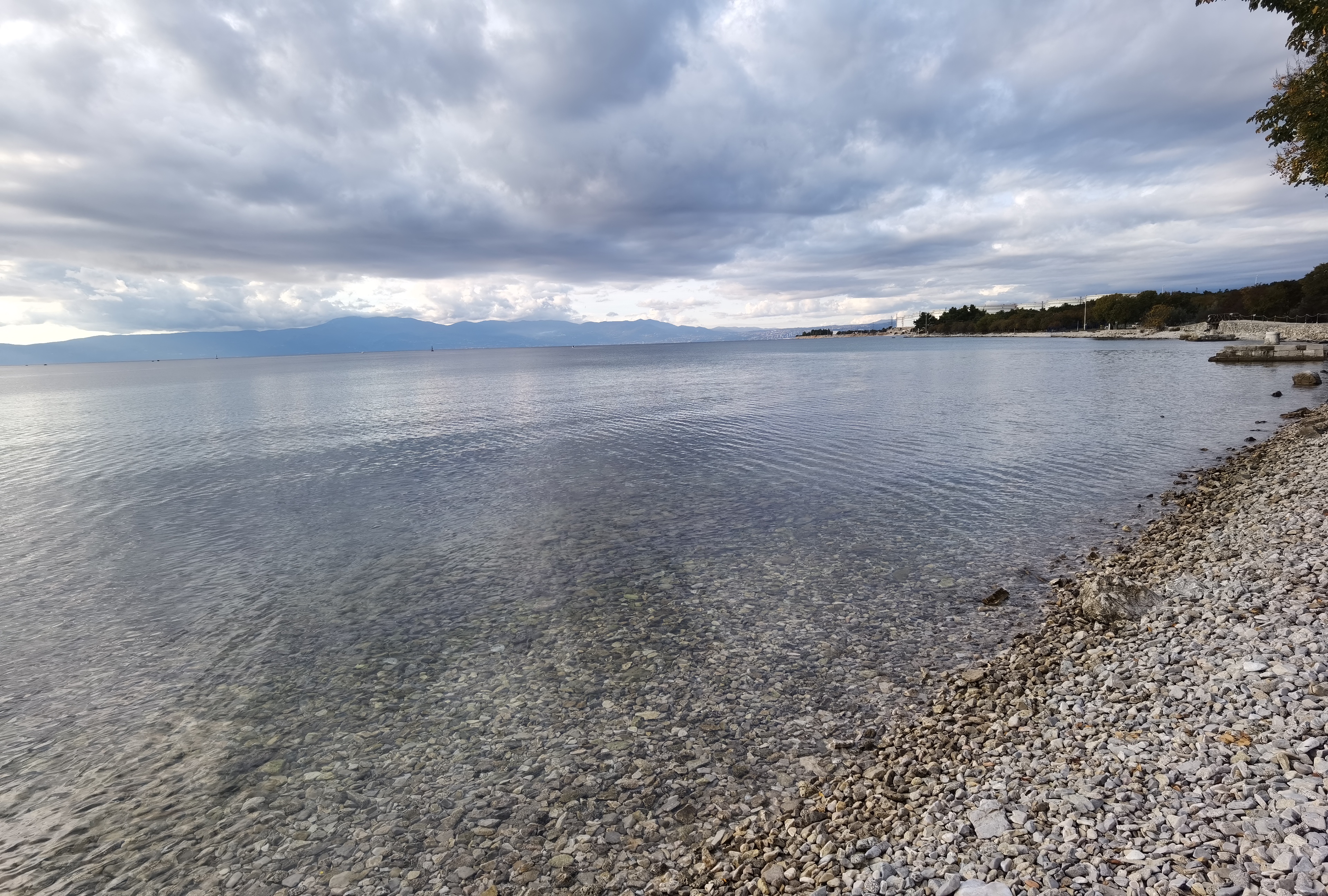
The monks of the Benedictine abbey of St. Nikola in Sepen Bay have a place in not only Croatian, but also world literature. The use of the Croatian alphabet and language is a requirement for survival in Omišalj, the Glagolitic hub at the time, thus the monks of Pope Innocent IV. beg for permission to use the Old Slavonic liturgy of God and the Glagolitic alphabet. Bishop Fruktuoz of Krk got a document from the Pope in 1252, granting a Glagolitic monk's request (as did Bishop Filip of Senj four years earlier). As a result, the Croatian language and script, together with Hebrew, Greek, and Latin, became part of a tiny set of languages used to approach God at the time.
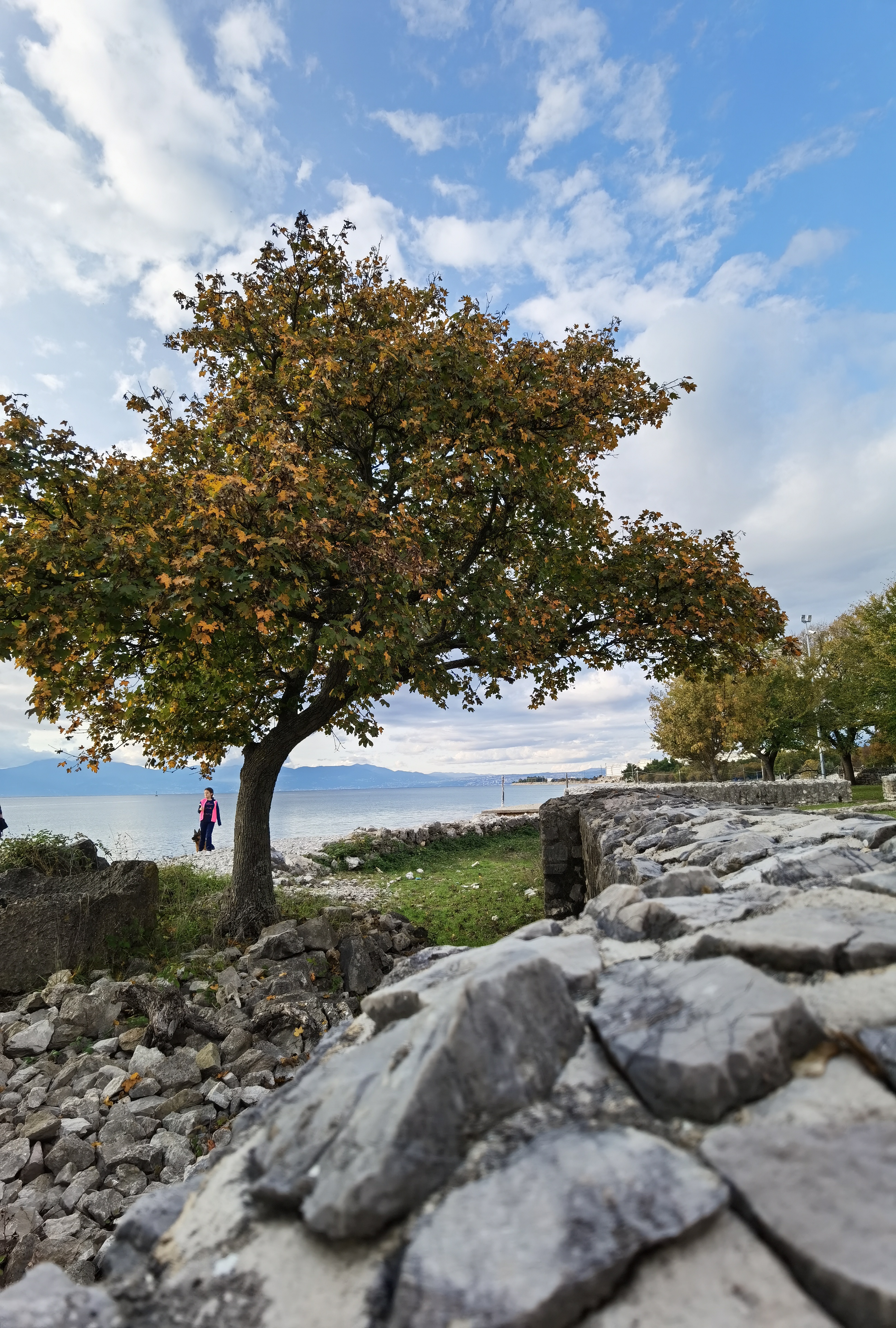
The little lady you see behind the tree is my favorite little person, my daughter. She did her own research by collecting shells on the beach and playing with the dog. :)
It was getting darker so it was time to go, because these ruins are actually reached through a path in the woods. Actually it was not easy to find these ruins since we chose the harder way to get to it. Of course there is an easier way, but adventures are definitely dearer to us than "easy prey". :)
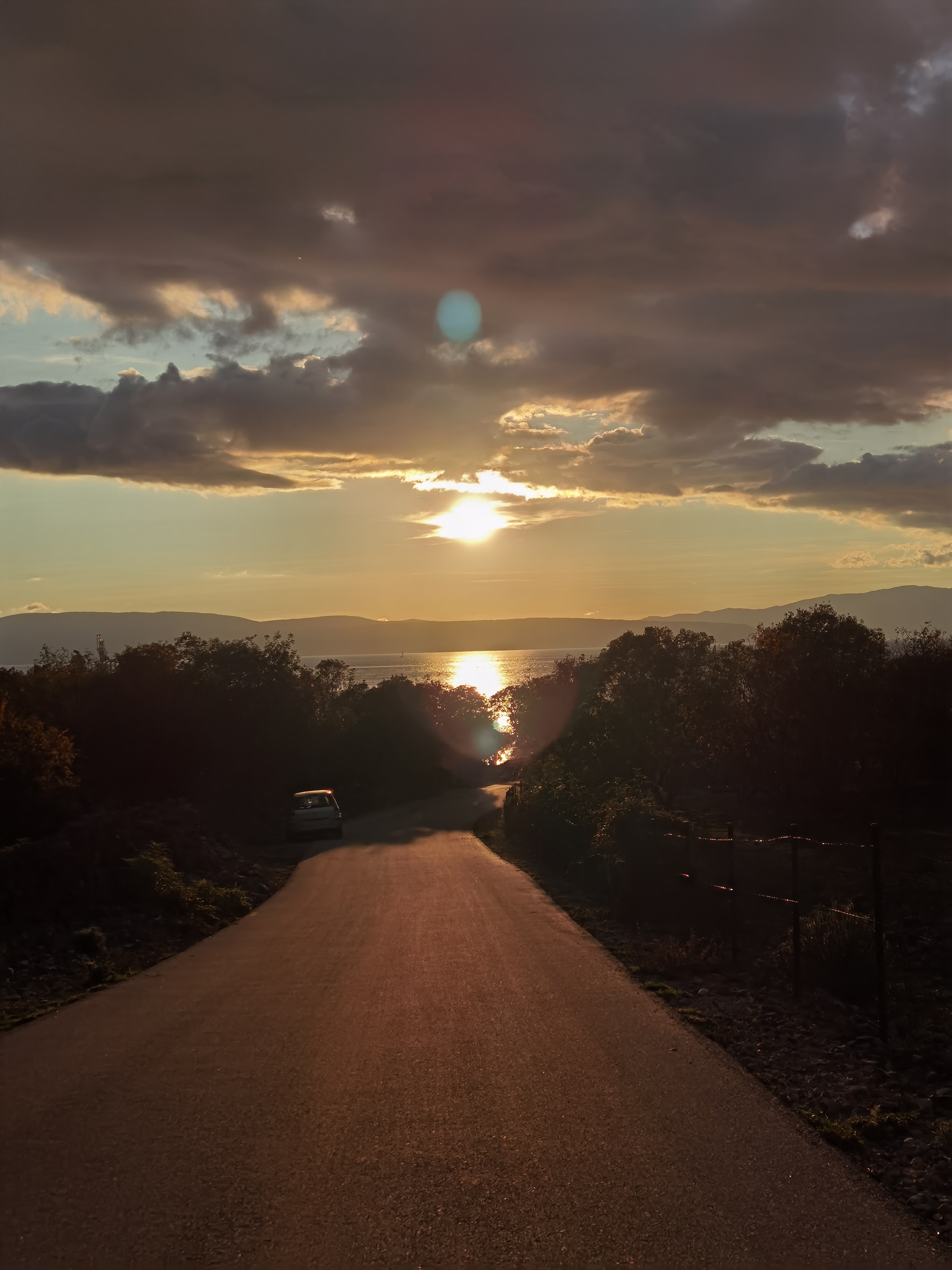
We stopped in the town of Omišalj before heading home. After a long day of researching and walking, we headed out for cake and coffee as a modest reward. I honestly didn't bother shooting many shots because it was already very dark and I was already a little tired.
I tested the phone's night photography and can tell that the results aren't bad for a cell phone camera.

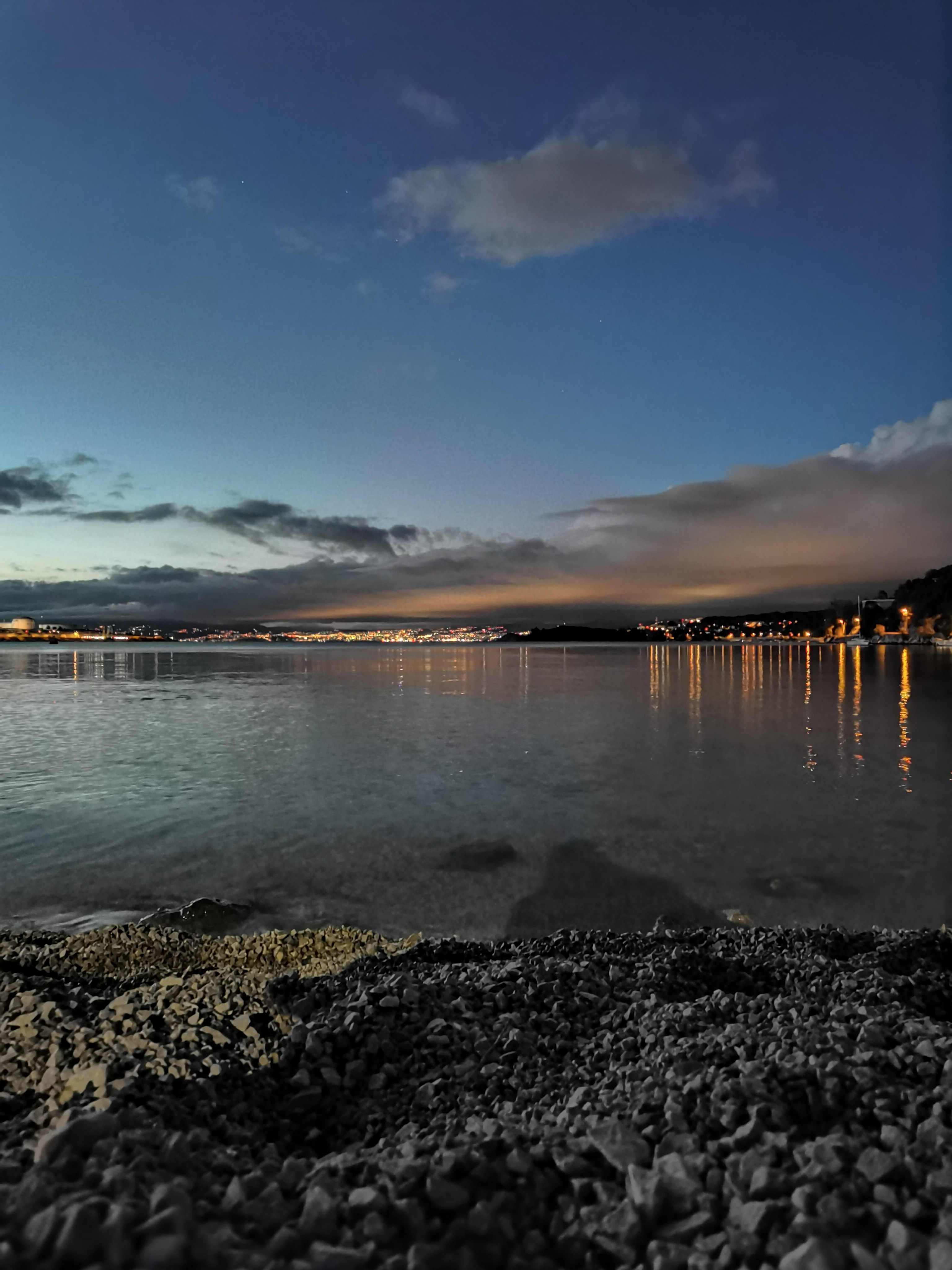

So, my dear Hivers, I hope you are looking forward to the upcoming holidays as much as I am. In the next post, you'll get a taste of Advent in the city where I live and its surroundings.
Be kind and happy. xoxo
#haveyoubeenhere
“Watch your thoughts; they become words. Watch your words; they become actions. Watch your actions; they become habits. Watch your habits; they become character. Watch your character; it becomes your destiny.”— Lao-Tze
Congratulations, your post has been added to Pinmapple! 🎉🥳🍍
Did you know you have your own profile map?
And every post has their own map too!
Want to have your post on the map too?
Your content has been voted as a part of Encouragement program. Keep up the good work!
Use Ecency daily to boost your growth on platform!
Support Ecency
Vote for new Proposal
Delegate HP and earn more
that's right, every season has something beautiful about it. I am also one of those people who love the rain, but only when I'm indoors and hear the raindrops dripping on the roof;)
Wonderful post and such great photos. Thank you for sharing your journey with us. I also wonder about the history and secrets of old buildings and ancient sites. One time I put my hand on a big tree on the grounds of an old manor, and I could see how the architecture had changed and where there used to be water. Sometimes we can glimpse the past if we can connect to the site and open to it.